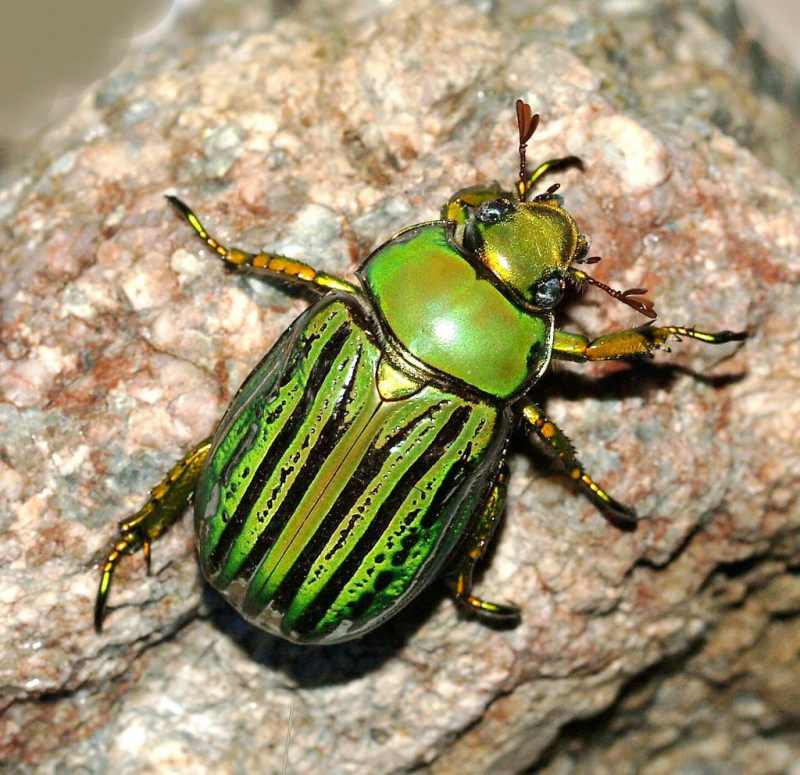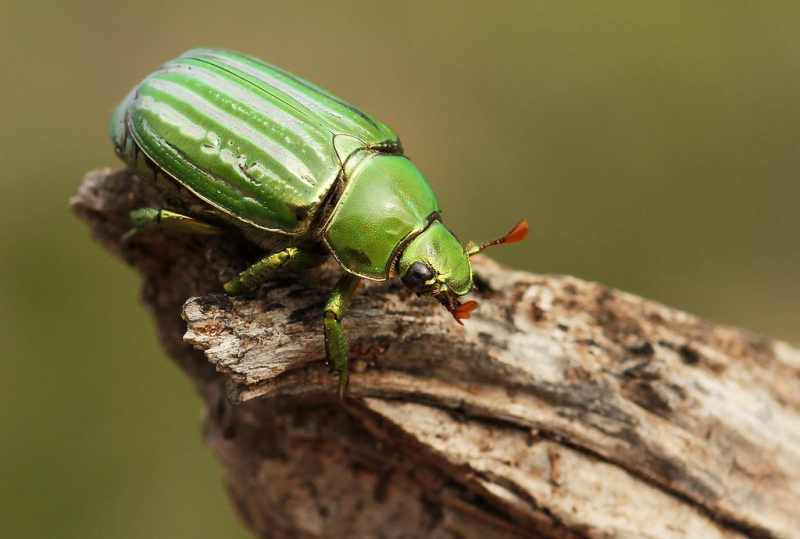Glorious Scarab
Chrysina gloriosa is a species of scarab whose common names are glorious beetle and Glorious Scarab. The adults are brilliant green with silver stripes on the elytra and range in length from 25 to 28 millimeters. The arrangement of chitin molecules into cholesteric liquid crystals produces these iridescent stripes on the cuticle of the elytra. The microscopic organization of each segment accounts for the variations in color, with green reflecting from cusp-like structures and silver reflecting from flat layers parallel to the elytra's surface.
The optical characteristics vary depending on the incidence angle of the propagating light, as demonstrated by Mueller matrix spectroscopic ellipsometry. The green striped polygonal cells produce self-healing Bessel beams. The adults can conceal themselves by blending in with the surroundings since they eat juniper leaves at a high elevation. The species is sometimes incorrectly thought to be endangered but has never been listed either in the IUCN Red List of Threatened Species or under the United States Endangered Species Act. An invalid synonym used to be Plusiotis gloriosa.












